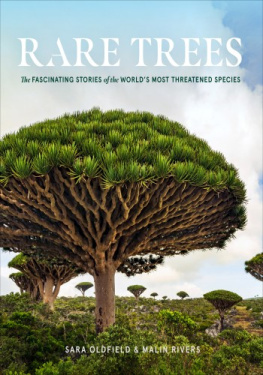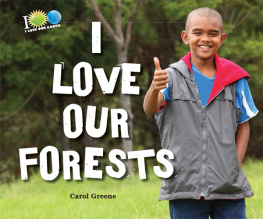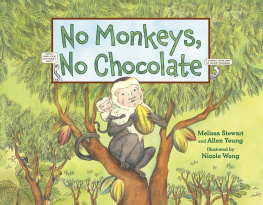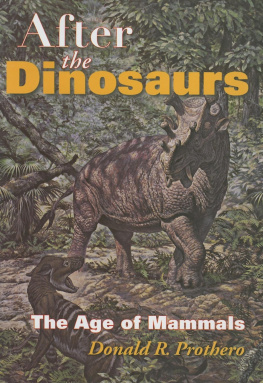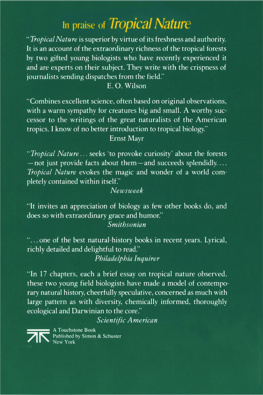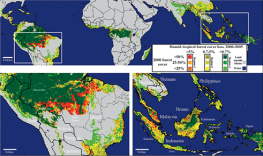Copyright 2021 by Patrick Roberts
Cover design by Chin-Yee Lai
Cover image Tomas Sanchez: Meditacin en la Selva Ideal, 1987, acrylic on linen, 31 x 39 in; private collection photo Christies Images / Bridgeman Images
Cover copyright 2021 Hachette Book Group, Inc.
Hachette Book Group supports the right to free expression and the value of copyright. The purpose of copyright is to encourage writers and artists to produce the creative works that enrich our culture.
The scanning, uploading, and distribution of this book without permission is a theft of the authors intellectual property. If you would like permission to use material from the book (other than for review purposes), please contact permissions@hbgusa.com. Thank you for your support of the authors rights.
Basic Books
Hachette Book Group
1290 Avenue of the Americas, New York, NY 10104
www.basicbooks.com
First US Edition: September 2021
Published by Basic Books, an imprint of Perseus Books, LLC, a subsidiary of Hachette Book Group, Inc. The Basic Books name and logo is a trademark of the Hachette Book Group.
The Hachette Speakers Bureau provides a wide range of authors for speaking events. To find out more, go to www.hachettespeakersbureau.com or call (866) 376-6591.
The publisher is not responsible for websites (or their content) that are not owned by the publisher.
Library of Congress Cataloging-in-Publication Data
Names: Roberts, Patrick, 1991 author.
Title: Jungle : how tropical forests shaped the world-and us / Patrick Roberts.
Description: First US edition. | New York, NY : Basic Books, 2021. | Includes bibliographical references and index.
Identifiers: LCCN 2021000308 | ISBN 9781541600096 (hardcover) | ISBN 9781541600102 (ebook)
Subjects: LCSH: Rain forestsHistory.
Classification: LCC QH86 .R63 2021 | DDC 578.734dc23
LC record available at https://lccn.loc.gov/2021000308
ISBNs: 978-1-5416-0009-6 (hardcover), 978-1-5-416-0010-2 (ebook)
E3-20210817-JV-NF-ORI
For Rhys, Ida, and Liviathat they may yet walk through their own Jungles
An image of the liverwort Marchantia polymorpha (Silvia Pressel)
Artistic reconstruction of Sphenacodon (wikimediacommons.org)
Image of an angiosperm leaf recovered from the Cerrejn Formation in northern Colombia (Carlos Jaramillo)
Comparison of the body size of selected giant sauropods (adapted from Wikipedia / KoprX)
Artistic reconstruction of a hadrosaurid (De Agostini via Getty Images)
Artistic reconstruction of Juramaia sinensis (Carnegie Museum of Natural History / M. A. Klinger)
A reconstruction of Repenomamus snacking on a Psittacosaurus (Wikipedia / Nobu Tamura)
Map of fossil hominins in Africa plotted against tropical forest distributions (Private collection)
Artistic reconstruction of Ardi Ardipithecus ramidus (Jay Matternes / Smithsonian)
Map of known Gigantopithecus fossils dated to between approximately two million and three hundred thousand years ago in southern China alongside the reconstructed extent of tropical forest (Kira Westaway)
Map of major Pleistocene hominin sites in Island Southeast Asia (Private collection)
Pleistocene fishhook made from marine shell (Sue OConnor)
Map showing the earliest known dates of Homo sapiens tropical forest occupation (adapted from Roberts and Stewart, 2018)
Present-day mound gardening of sweet potato in New Guinea (Robin Hide, Tim Denham)
Forest islands at Llanos de Moxos, Bolivia (Umberto Lombardo)
The UNESCO-protected Banaue rice terraces in Ifugao on the island of Luzon in the Philippines (Getty Images)
Map of the Caribbean showing the main waves of human colonization of different islands (adapted from Scott Fitzpatrick)
Artistic reconstruction of the now-extinct elephant birds of Madagascar (Velizar Simeonovski)
The ancient Classic Maya ceremonial center of Tikal, Guatemala (Michael Godek / Getty Images)
The central temples of the pre-Angkorian urban complex of Sambor Prei Kuk, Cambodia (visualization by Damian Evans from Lidar elevation data acquired by the Cambodian Archaeological Lidar Initiative in 2015)
Aerial overview of the Angkor Wat temple complex (Damian Evans)
(Private collection)
Timeline of Europe and the tropics in the age of exploration (Private collection)
The streets and buildings of Vigan City in the Philippines (Jason Langley / Alamy)
Map of the transatlantic slave trade (adapted from Pearson / Desai / Science / Trans-Atlantic Slave Trade Database / Emory Center for Digital Scholarship)
Hand ginning of cotton in India by a Ponduru woman (Meena Menon)
Photograph of Queenslands rainforest on fire in 2019 (Renier van Raders)
The scene left behind following a fire in a tropical forest in Queensland, Australia (Renier van Raders)
Monoculture oil palm plantation in Borneo, Indonesia (Douglas Sheil)
B attling through the heart of the Brazilian Neotropics in July 2019, my student Victor Caetano Andrade and I fended off poisonous snakes, gigantic mosquitoes that can bite through the tough skin of crocodiles, and heat that made sweat cascade like waterfalls into our eyes. Over the previous ten years, my fieldwork in the worlds tropical forests had taken me from the leech-filled rainforests of Sri Lanka to the flammable dry forests of Australia and the volcano-skirted misty cloud forests of Mexico. But nothing had prepared me for the teeming life, stifling climate, and vast array of green that flanks the Amazon, the largest river in the world by volume. Just to reach our field site and host village required a 523-kilometer slow ferry (recreio) journey that took a staggering thirty-six hours, followed by another two-hour ride in a small, open boat, which we undertook while loaded down by several awkward boxes of scientific equipment, a rudimentary toolkit for on-site maintenance, and whatever clothes the remaining space and willpower would allow us to carry. Over the course of his summer research, Victor would suffer a bout of dengue fever, a pus-producing infected boil the size of a small plum on his hand, and the failure of an airplane engine during landing in a local city. This all likely sounds fairly familiar to those of you, particularly in Europe and North America, who have experienced jungles only in terms of the films and novels that are set there. From the trials of Apocalypto to Mowgli running with animals, most of us see tropical forests as a kind of terra incognita. They provide artistic metaphors and natural resources, but they are fundamentally different from our own ideas of home. In fact, the overwhelming implication of most Euro-American books, series, and blockbusters set in the jungle is that tropical forests are fundamentally incapable of sustainably and safely supporting large human societies.
This notion informs not just popular but also academic thought. Tropical forests are often ignored in discussions of our human story and the history of life on Earth. The dominant narrative of human evolution, for example, is that our hominin ancestors left behind the perils and slim pickings of the forest as soon as they were able, striding out onto open savannahs with novel tools ready to exploit the rich game opportunities that these environments provided. The search for the origins of our own species, Homo sapiens, and its rapid routes of dispersal around the globe has similarly focused on open grasslands or, alternatively, coastal settings. Likewise, discussions of the origins of agriculture or cities almost never involve tropical forests. We have deemed them unproductive and assume that they have uniformly poor soils, deadly natural hazards, elusive animals, and extreme climates that would make it impossible to maintain the types of agriculture and cities we associate with our own, purportedly complex human societies. Given the seemingly inevitable devastation inflicted by industrial farming and urban populations on these environments today, we wonder how these habitats could ever have supported sweeping monoculture croplands, vast pastures, and bustling metropoles. Instead, accounts of communities living in tropical forests tend to describe small, often supposedly isolated groups that rely on hunting and gathering to survive. These assumptions shape not only how we understand the history of tropical forests but also how we go about trying to protect them. Traditional conservation approaches to tropical forests assume that humans are simply incapable of living in them sustainably and that the best way of protecting them is to treat them as intact ecological wildernesses, with minimal human disturbance and presence. Even the word commonly used in English to refer to tropical forestsjungle, from the Hindi word


